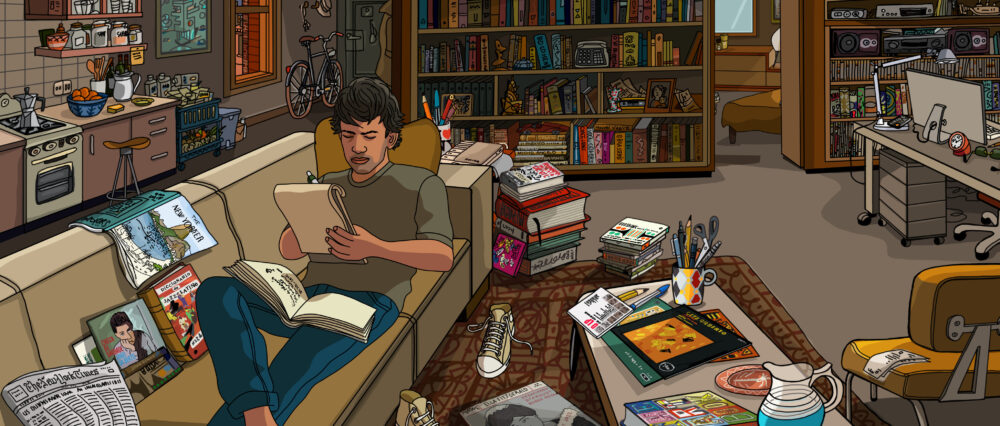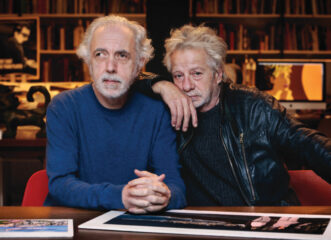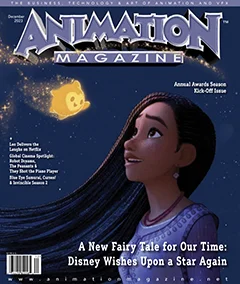|
Getting your Trinity Audio player ready...
|
When filmmaker Fernando Trueba decided to tell the story of Francisco Tenorio Júnior — a gifted Brazilian pianist who mysteriously vanished at age 34 while visiting Argentina — there was no doubt in his mind that animation was the best medium for it.
“I wanted to make a documentary about a musician — an artist alive — and see him playing and see him in the bars that don’t exist anymore, where bossa nova was created,” he says. “And after Chico & Rita, I thought that animation was the best possible language for Tenorio’s story.”
The result is They Shot the Piano Player, which Trueba wrote the screenplay for and directed with Javier Mariscal — their second animated feature collaboration after 2010’s critically acclaimed Chico & Rita. The feature film puts real interviews with Tenorio’s colleagues, friends and family to animation — all tied together with a fictional framing sequence in which a New York journalist played by Jeff Goldblum discovers and tracks down the story.
Stepping Back in Time
That part is in some ways only half fiction, as it’s based on Trueba’s own tale of discovering Tenorio’s music and then his lost story. While making the 2004 documentary The Miracle of Candeal, Trueba often escaped into bookshops and record stores, where he found a jazz record called O LP, on which Tenorio played. Taken by the pianist’s performance, he tracked down via eBay a copy of the one record Tenorio had made as a bandleader that had long been out of print.
“I was interested in him and what the guy was doing now,” Trueba says. “And I discovered that there was nothing where he was participating, or by him, in the last 30-some years.”
He describes Tenorio as a “musician’s musician” — he was not popular or famous, but all the best players and most knowledgeable fans of Brazilian jazz knew and loved his playing. There was little information about his disappearance — he left his hotel late one night in 1976 to pick up some sandwiches and never came back.
“I was first shocked by it and I started to try to find things,” Trueba says. He started by speaking with Suzana de Moraes, daughter of poet and musician Vinicius de Moraes (whom she made a documentary about). This prompted him to begin to track down more interviews.
“From the end of 2005 to 2007, I did like 140-something interviews,” he says. “Most of them were in Brazil, but some in Argentina and some in the United States.”

Trueba at this point was determined to make a film that would document Tenorio’s music and life and preserve his memory. Having just completed Chico & Rita, he had second thoughts about his initial idea of using animation. But the more he thought about it, the stronger the urge became and the more he thought Mariscal was the right man to help him make it.
“I became more convinced that live-action or documentary were not the right way to tell that story,” he says. “Javi was the right man to do that, to give color and life into this. So, from that material, from all these hours of interview, I just start writing a screenplay.”
The process started with a year of preproduction work during which they decided on the art styles and color palettes and storyboarded the movie.
Mariscal says they decided on a more realistic look for the framing sequences of Goldblum’s journalist tracking down the story, and more colorful and expressive looks for the flashback and interview sequences.
“The palette of the colors (for the flashbacks) remains more like three, four colors — even one color — and we try with the color to describe the feeling of the people in the memory,” he says.
Sequences were animated over the following two years by studios in Amsterdam, France, Spain and Portugal, with the production’s main base in Barcelona, Mariscal says. Postproduction — including the detailed sound work — was done in France and was essential to the movie with so much music and original interview audio.
“This is a more risky kind of story and kind of movie, so we didn’t want to do the classical animation at all,” Trueba says. “We wanted to experiment more, to break things. And that’s one great thing about Javier Mariscal’s art, is that he is he has this quality that is very open, very risky, very broken, very Picassian in some ways, etc. And it was great to have his style in a movie like this.”
Mariscal agrees that animation was the right choice because it allows the audience to see Tenorio directly through the memories of the people who knew him. If an actor played Tenorio as a character, the audience would see the actor first, and a straight documentary would lack the movement and feel that animation gives to the 1960s and ’70s and the music of those times.

‘I tried to tell a good story … but if the young generation who doesn’t know anything about Latin America in the ’70s, or about the relationship of American and Brazilian music, can learn and discover things, it’s also very good.’
— Director Fernando Trueba
“Everybody will have very different memories of the same thing,” he says. “And with the drawings, you can go more far away and have more a strong relation with the audience.”
Obtaining the rights to some of the music was complicated, Trueba says, since the rights holders were often decentralized — there was no one person who could make a decision. “There were some difficult ones, but we got it resolved,” he says.
Musicians appearing in the film include such accomplished and iconic players as Vinicius de Moraes, Tom Jobim, João Gilberto, Caetano Veloso, Milton Nascimento, Gilberto Gil, Paulo Moura, João Donato, Mutinho and Aretha Franklin.
Goldblum leads the cast of actors for the fictional characters, which also includes Roberta Wallach and Brazilian favorite Tony Ramos as João.
Trueba says he met and became good friends with Goldblum years ago while making another movie, and he had the actor in mind for the lead role as he wrote it. “He liked the screenplay, and he’s also a pianist and a very good musician,” Trueba says. “For me, apart from being a good friend, Jeff is the most interesting voice in American cinema. … It’s like a jazz player voice … He is always fresh and new. It’s never boring for one second.”
The final fate of Tenorio, as revealed in the film, is tragic. His visit to Buenos Aires coincided with the rise of a military dictatorship in Argentina. He was taken by the police, detained and questioned, and eventually shot in the head. Although Trueba wasn’t looking to teach a history lesson, it does reflect on the state of politics and the rise of authoritarian and dictatorial powers in Latin and South America at that time.
Back to Bossa Nova
“I tried to tell a good story, that’s the important thing,” he says. “But if the young generation who doesn’t know anything about Latin America in the ’70s, or about bossa nova or about the relationship of American music and Brazilian music, can learn and discover things, it’s also very good.”
The tragedy of his death — he was a musician, and not political — is still relevant with innocent people still being caught in the crossfire of wars today in places like Ukraine and the Middle East.
“I think it’s important to rescue this great artist, who has been cut (down) in the middle of his life and career, but also to tell a story about the crash of beauty and violence that happens every day still,” Trueba says.
Sony Pictures Classics will release They Shot the Piano Player in select U.S. theaters for one week from Friday, November 24.


















